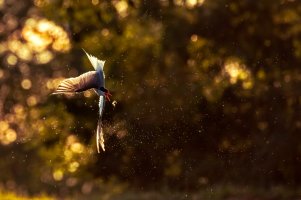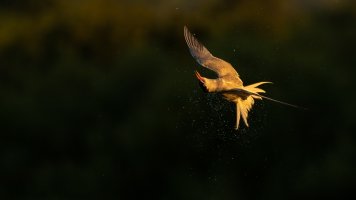1) I have no interest or desire to go down that equivalence rabbit hole. Everyone has explained their viewpoint a thousand times over and I don't care to take the bait. I take a narrower view of equivalence than others do. I prefer to use it exclusively to describe exposure equivalence. I think it can confuse people to expand it to cover depth of field at different sensor sizes. You disagree. I understand your point of view. Enough said.
That’s like saying you have a narrower definition of a house, you only care about the front door. Your understanding of that door may be interesting, but if you only describe the door you aren’t talking about a house.
Equivalence is a formal concept in photography. It’s not a point of view. It’s not a rabbit hole. You trying to limit the concept to apply only to equivalent field of view is fine, but then you’re not talking about equivalence anymore.
I agree that the concept of equivalence is confusing to some people. So are concepts in subject areas like general relativity, genetics and macroeconomics. My approach is to try and explain the concepts factually and correctly when it’s clear people are wrong about them. Your approach would apparently be to limit the discussions to space but not time, pretend all heritable traits are monogenic and Mendelian, and discuss only inflation but not GDP or unemployment as driving factors.
In my experience, people who ‘take a narrower viewpoint’ of a complicated concept usually do so because they don’t really understand the full concept. Rather than try to expand their understanding to encompass the full concept, they prefer to try to limit discussions of the concept to the part of it they do understand.
A reductionist approach in teaching a concept is different. When I took macroeconomics (which was a long time ago, think ‘Reaganomics’), we learned about GDP, then later about unemployment, then about inflation. Then we discussed how they interact to drive economies. The professor didn’t just walk out and explain inflation, then drop the mic and pass out the final.
2) Although you were talking about comparing a FF picture to an APS-C picture of the same size, that was not stated. Yes, of course, if you add the variable of enlarging an image to the same size and compare one taken with the full frame vs. one taken with a cropped frame (either by using a smaller sensor or by cropping the image in post) the image with the greater enlargement will show more noise.* No disagreement there.
I stated, “…change the sensor from FF to APS-C but not the lens, zoom setting, or distance to subject.” Why would you somehow assume I also meant, “…and crop the image,” if I didn’t state that. The only reason I can see is to ‘prove your point’. Well, your point was analogous to proving that water is wet, so…ummmm…well done?

3) Using your bucket example. If instead of a single bucket, you have a teacup inside a bucket and a teacup sitting alone, you will end up with the same amount of water in both the APS-C teacup and the "cropped" teacup within the full-frame bucket (assuming of course that there is no overflow from the gallon bucket).
Of course, but that was never part of the debate until you set up that pin for you to knock down. And guess what? The water filling the cropped teacup inside that bucket will be wet.


